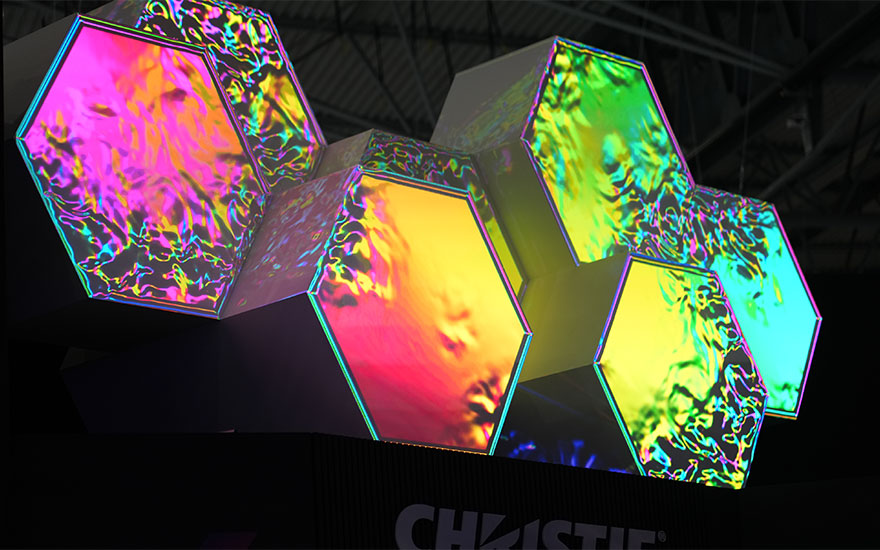From immersive art experiences to virtual production: how technology shapes the creative process
Think about the last time you were immersed in an experience. It could have been a trip to the movies, a group outing to an escape room, or a dedicated immersive experience like Illuminarium at Wynn Palace Cotai.
What you likely remember from this experience is the story that you were immersed in – the movie made you laugh or cry, an escape room challenged you to solve puzzles as the story progressed, and the immersive experience transported you to a different part of the world. What you might not have focused on was the technology that enables these experiences. That’s because the magic happens behind the scenes, letting the story shine.
We spoke with Chris Barnett, our public and live events manager, about technology and the creative process.

ProAV Technology that enables storytelling
Chris works closely with creative directors in what he describes as a dialectical process to understand a project’s goals and to collaboratively navigate a path toward them.
“To start, it boils down to a few questions: What are my options to tell a story? What different tools are available to reach and communicate with an audience?” says Chris.
Chris encourages creative directors and their teams to consider the entire journey of a guest through their project. How will a guest arrive at your experience? What do you hope they’ll take with them once they leave?
“As they get there, are you psychologically preparing them for your experience in some way, or are they just walking in cold off the street? There's so much to consider,” laughs Chris. “You can almost just consider yourself into paralysis where you're just like, ‘well, what do I do?’”
Breaking it down
However, Chris is pragmatic, and breaks down steps that you can take when you’re considering creating an experience or installation:
- How much space do you have?
- What is your budget?
- Is it a solitary or shared experience?
- What’s your timeline?
When using technology to create experiences, “trying to align the four considerations with the message or story that you're trying to convey so that it resonates with guests, is a challenge,” says Chris.
“Technology should be considered early in the process—before a well-developed vision of the project has been established,” says Chris. “It can be disheartening to craft a vision for a project only to discover that the technology might not fit within the budget.”
Embracing new technology
Chris suggests approaching the use of technology in storytelling with an open mind and a willingness to learn. “There could be an opportunity to do things better, differently, and with a greater effect.”
“Education is so important,” he says. And it’s not a one-way street. There could be features or technology that we need to include on our roadmap. Given how quickly technology is advancing, it’s nearly impossible for anyone to keep up with all of the changes. “The best advice that I can give is to approach a new project with an open mind to the possibilities.”
A new way to use established technology
“We've introduced a technology that is really bending people's perception of what is possible,” says Chris.
Chris is alluding to Virtual Projection, a virtual production solution that combines RGB pure laser projectors and show control software to enhance production quality, reduce budgets, and allow creators to explore new storytelling possibilities. It’s a fraction of the cost of traditional LED virtual production stages, which makes the technology accessible to more studios and creators in live events, broadcast, video production, and immersive art.
Revolutionize production with the power of Virtual Projection – demo 1

“It leverages light that is otherwise not experienced,” says Chris. “Fundamentally, we are commodifying light information that used to be disregarded but should and can be used for the purpose of storytelling.” Virtual Projection gives creators and filmmakers access to real-time creative freedom in ways that were previously cost-prohibitive, while also empowering people to make dynamic scene adjustments without fear of costly post-production. “We allow producers to approach a project from a ICVFX [in-camera visual effects] mindset, but without the risk associated with making changes on set.” This flexibility enhances spontaneous storytelling on set and ensures projects can be graded and tailored for any viewing platform — whether mobile, tablet, or TV — while preserving the creator’s vision across all formats.
“It's really an exciting time. I think that there's going to be a huge explosion of content and creativity, especially in the experiential space.”



